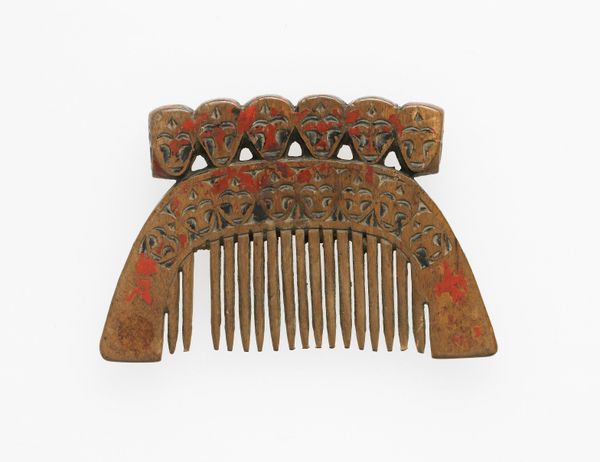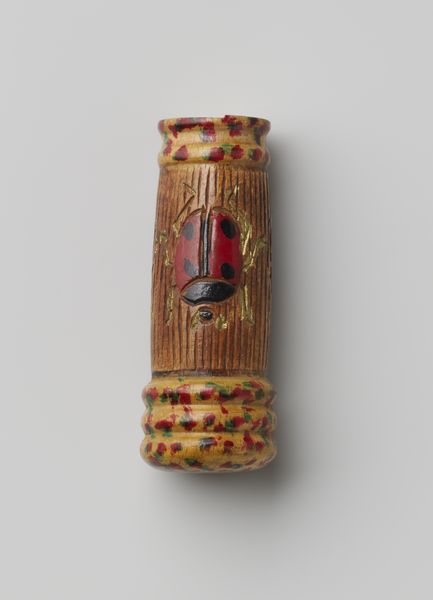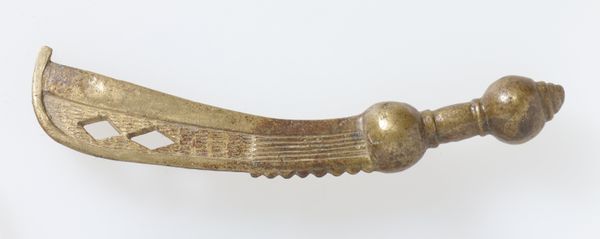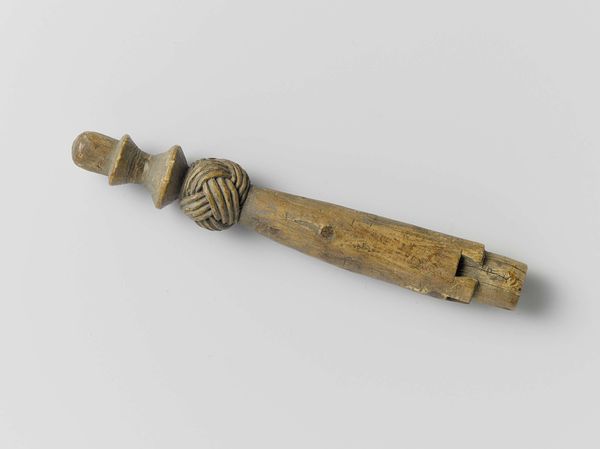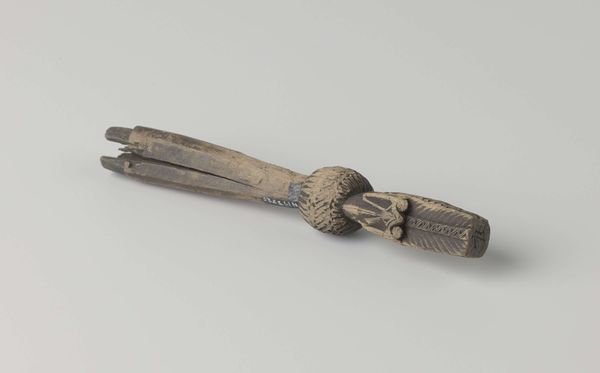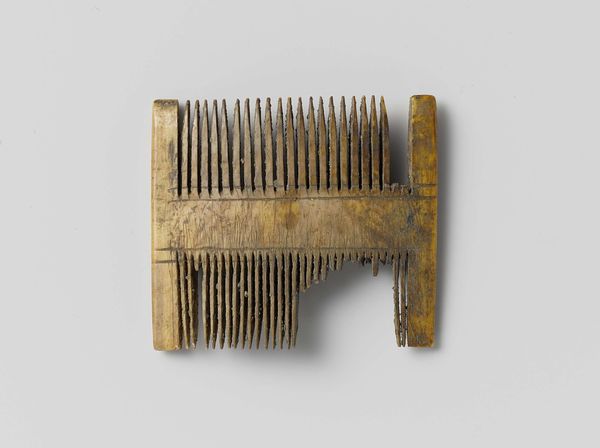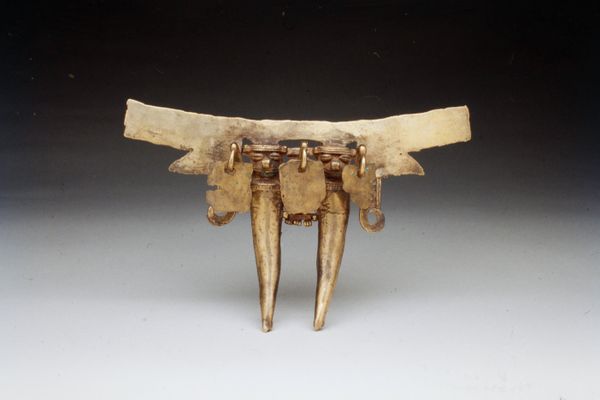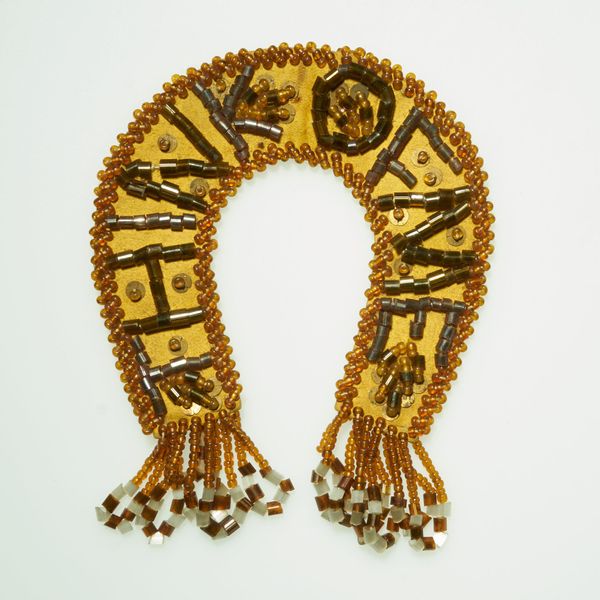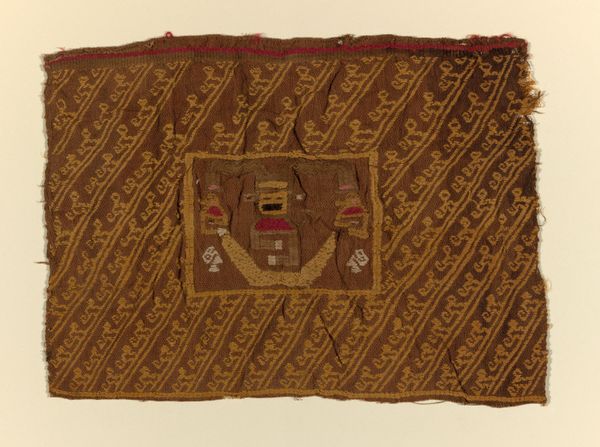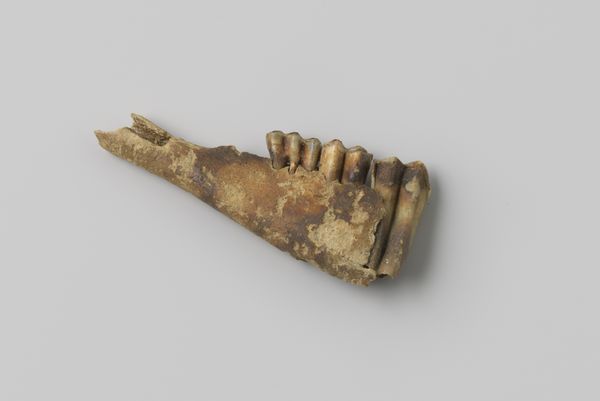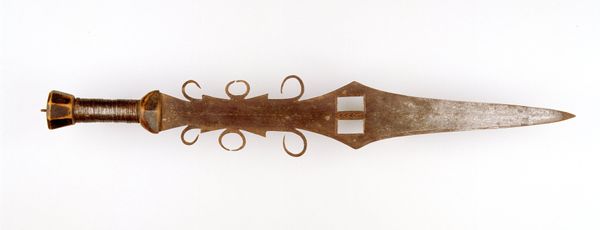
carving, sculpture, wood
#
african-art
#
carving
#
asian-art
#
folk-art
#
sculpture
#
wood
#
decorative-art
Dimensions: 2 1/4 x 3 1/2 x 3/8 in. (5.72 x 8.89 x 0.95 cm)
Copyright: Public Domain
Curator: Look at this remarkable comb from the late 19th to early 20th century, held in the collection of the Minneapolis Institute of Art. It's made of carved wood, an example of decorative or folk art. Editor: It's... striking. The little faces carved into it, all in a row and stacked in tiers. There's a certain... intensity to it, don't you think? Almost confrontational? Curator: Precisely! That's the beauty of engaging with these pieces. These motifs have origins in ritual practice. Facial representations function as apotropaic symbols; notice how this visual language weaves cultural meaning into even quotidian objects. The red highlights may represent various things depending on the culture of origin, adding more layers of interpretation. Editor: So, it's not *just* a comb. It’s carrying something more than hair. Where do you imagine it originates from and in what settings it may have been utilized? It doesn't read 'simple grooming tool' to me; rather, there is a deep performative character embedded in its design, perhaps a rite of passage from childhood or some form of theater. Curator: Exactly. Such ornamental combs often indicate not merely cleanliness or beauty, but delineate rank, affiliation, or marital status. Considering the wood material and carving style, it has visual connections to different indigenous traditions, particularly where intricate craftsmanship symbolizes both earthly status and connection to unseen worlds. Each carved face isn't merely decorative but may be ancestral, symbolic protectors invoked through meticulous carving. Editor: That changes how I view the piece entirely! It goes from an intriguing curio to something imbued with power and history, social history that helps me see the image’s power and the many stories it carries. It's amazing how everyday objects can become such potent cultural carriers. Curator: It really underlines art's significance, doesn't it? How it exists not just in galleries or museums, but threaded throughout the objects that shape our lives and give depth to the daily grind. Editor: Yes, turning the mundane into the profound through sheer artistry and careful symbol implementation. Thank you. I will not look at decorative objects in quite the same way again!
Comments
No comments
Be the first to comment and join the conversation on the ultimate creative platform.
